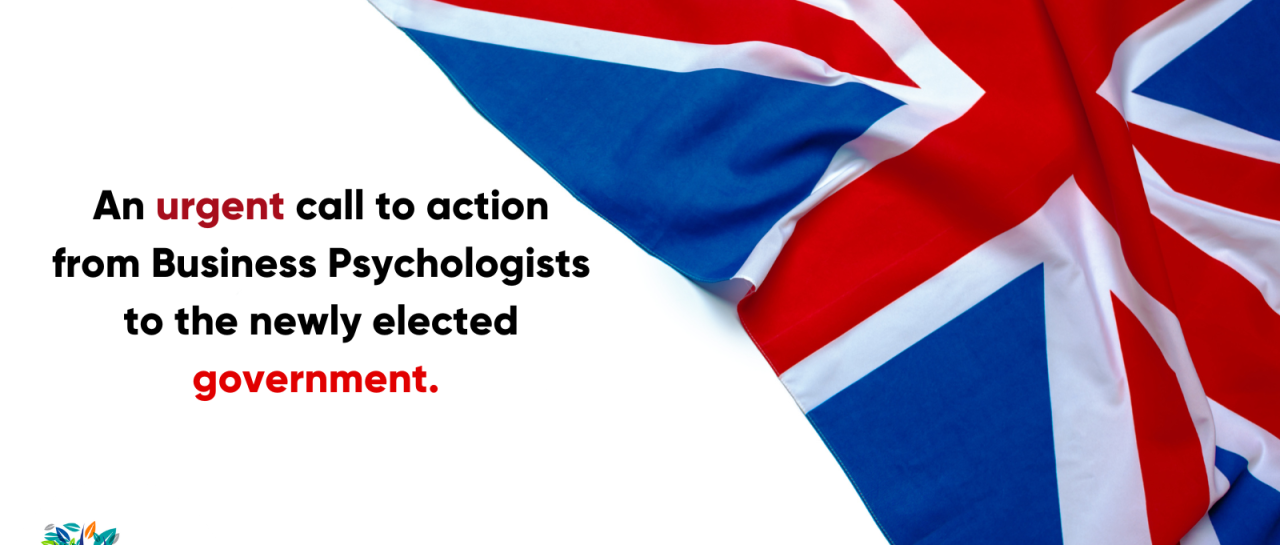Authored by Certified Business Psychologist Laura Howard. Certified Business Psychologist, Laura Howard, reflects on the webinar she recently delivered to ABP members. Below she outlines the main findings of her published research uncovering systematic barriers women face when being authentic as leaders. Importantly, she gives…

Dan Hill, President, Sensory Logic Inc., Minnesota US
Applying the Big 5 and Emotional Intelligence to Improving Workplace Cultures
8th September 2020
Most organisations with a company culture which fails to deliver on its customer and stakeholder expectations will have leadership issues which need fixing, argued Dan Hill of Sensory Logic, Inc at the September event of the ABP held online. A large audience heard the findings that the Emotional Climate within a company may account for as much as 30% of the company’s performance, and that the CEO influence is responsible for 50% of that culture. How are CEOs doing in terms of creating a company climate conducive to performance? Not well, in fact Gallup estimated in 2019 that as many as 75% of employees in large organisations are present but disengaged and what is particularly shocking is that very few people stand out to even bother to challenge the status quo.
A parody attributable to a well known CEO on the great star “I don’t do feelings, I leave that to Barry Manilow” still resonates across many organisations. However, the tide has turned and most organisations now understand the importance of the positive use of emotion, as demonstrated by neurologist Donald Calne’s work that proved that the principal difference between emotion and reason is that emotion leads to action while reason leads to conclusions. Most people, however, have still not picked up on the intimate ties between emotion and motivation, which both come from the Latin word movere, to move, to make something happen, i.e. to be productive and pro-active.
That said, the study of emotion in an organisational context is still a relatively new discipline. The father of serious practical applications of work in this area was Lou Gerstner of IBM, whose work concluded that you have to appeal to emotions to improve effectiveness at work.
This was followed up by some fascinating work by Gerald Zaltman who discovered that as much as 95% of brain activity occurs in the subconscious. Emotions therefore have a critical influence on motivation and performance. In fact the role of emotion can have an influence on Feelings, which in turn affect motivation, recall, preference, satisfaction and loyalty. Work by Kahneman demonstrated the two speed brain: we like to think we are careful and rational “like Dr. Spock” of Star Trek fame, but in reality our decision making is more like Homer Simpson, in the area of the brain where the brain is intuitive, quick and emotional. At a basic level, the brain responds to a three step process:
* Sensory Enticement
* Emotional rewards
* Rational confirmation
Whatever the environment, it has to be adapted to accommodate these brain traits for maximum positive engagement.
So, which tools actually work in the positive harnessing of emotion?
Serious work on emotion as a critical building block was the preliminary work on Emotional Intelligence undertaken by John Mayer around 1990. He concluded that emotions could be meaningfully categorised into Perceived Emotions, Understood Emotions and Manage Emotions linking into its opposite, Spontaneity. The Advertising Research Foundation (ARF) followed on this work through a NeuroStandards Collaboration Project with a study and follow up but failed to correlate results with behaviour. However it did provide a useful conclusion in that the best correlations were with results from fMRI tests and facial coding.
Those two tools, fMRI and facial coding, stand out because they can capture both of the key and necessary dimensions: arousal and valence.
How can evidence be gathered and collated? Brain scans (fMRI) present real operational challenges because the brain is wider than the sky! A substitute of sorts, Electroencephalogram (EEG) can handle arousal measurements but does not distinguish between happiness and anger and therefore this approach isn’t very usual as valence remains elusive. However, fRMI brain scans have a high level of accuracy and reflects facial coding fairly accurately but are costly and complex. A simpler solution is to address facial coding by looking at a range of facial expressions. This is an approach gaining traction. For instance,a Chinese company has created technology used by the Chinese Government to identify and then interrogate and communicate with political opponents such as Uighurs but important work which predates this was undertaken by Charles Darwin who used an orang-utan (Jenny) at London Zoo to explore a comparison of emotions between men and animals. Walt Disney commercialised this concept using a variation in face size of Mickey Mouse to create different effects.
By now the study of emotions had become popular and it became possible to validate tests and correlate using external experts. One proof of facial coding’s validity is that 248 experts were polled, 88% identifying Universal Emotion, 80% facial signals linked to spontaneity, but only as much as 51% finding biometrics like body temperature to offer much validity. Dan gave examples of links to the Big Five personality traits but added two other critical elements, Honesty and Humility as vitally important and ones psychologists are now investigating as a possible 6th trait.
A positive culture is linked to industrial innovation. The speech made reference to the work by Timothy R Clark, which sees a good company culture as building constructively along a ladder model from Exclusion > Inclusion > Learner Safety . Contributor Safety > leading to the Holy Grail of Culture “Challenger Safety”.
This work also demonstrated that if an organisation increases Intellectual Friction then Social Friction would be correspondingly decreased with the reverse being true. This model can be linked into Maslow’s Hierarchy of Needs of which the most important is Safety Needs (identified as important but yet ignored by as many as 25% of managers) which provides a gateway to meeting a range of other needs on the hierarchy.
CEOs have to find alternative ways of measuring performance, other than stock buy backs and other financial incentives.
Dan’s recent work has focused on facial coding, including celebrities, senior managers and advertising agencies. Facial coding involves:
Approach emotions – happiness, anger, sadness
Reaction emotions – fear and surprise
Spurning emotions – disgust and contempt
Studies of Political Leaders (Rubenzinger and Faschingbauer) have shown that a mix of certain Big 5 traits work best, especially Openness. Dan’s book “Two Cheers for Democracy” took a wider perspective and built on this work, adding in which emotions might help best predict both whether a leader will be great in The White House and be democratically inclined as opposed to having dictatorial tendencies. Study of US political leaders showed astonishingly high levels of correlation in Extraversion (0.17) and Openness (0.32) in prediction of levels of success but other traits did not correlate so well.
A considerable amount of data is available through Freedom House, a media outlet which has looked at traits in political leaders around the world and it is possible to use this data to undertake leadership effectiveness research. For his work on US presidents, Dan used this data, along with his work on facial coding in relation to his exploration of “greatness” and related core emotions. Here there were much better correlations and in addition he related these to enabling greatness, impairing greatness, relegating the others to non-factors. For example, Joy and satisfaction featured highly in relation to greatness, reflecting a conviction and comfort in the role.
Correlations of Emotions and Greatness
| Enablers | Inhibitors | Others | |||
| Joy | 0.28 | Sadness | 0.23 | Surprise | 0.09 |
| Satisfaction | 0.14 | Disgust | 0.19 | Acceptance | 0.07 |
| Anger | 0.12 | Contempt | 0.18 | Pleasure | 0.03 |
| Fear | 0.15 |
President Lincoln was reputed to be one of the happiest presidents in history, by virtue of his ability to use emotion to offset sadness but was high in “Happiness”. By contrast Trump is bedevilled by sadness compounded by disgust.
It is instructive to compare Governance styles: material predates 1973. A box comparing harshness and exuberance amongst leaders can be a basis for making comparisons in effectiveness of democracy in nation states and harshness in emotional displays. Free, partly free, not free and free/USA. It is interesting that the US lags much of Europe because of historical restrictions, now addressed, in voting patterns.
Taking this one step further, the correlation between emotion and democratic governance reflect the degrees of innovation and work culture, with Germany featuring strongly.
In conclusion, JP Morgan hypothesised that “Man makes decisions for two reasons
The good reason: the rational approach epitomised by Dr. Spock
The real reason: coping with emotion and impulsivity (Homer Simpson)”
The bottom line: Dealing with emotions is not a luxury or an option, it is centre stage in organisations improving their efficiency and effectiveness in the real world
RT
08 Sept 2020



